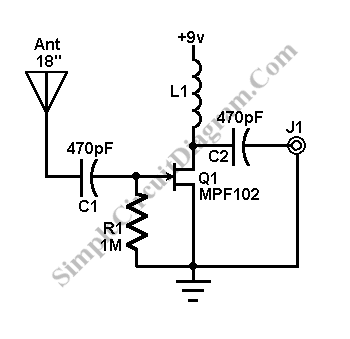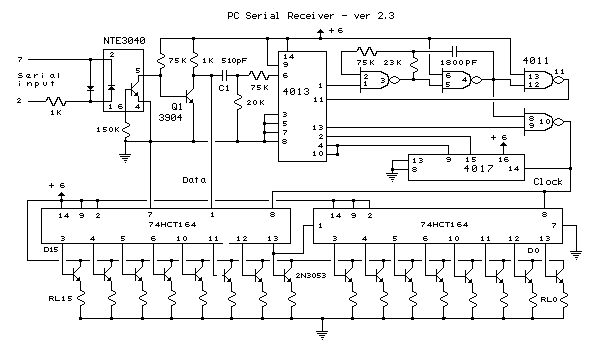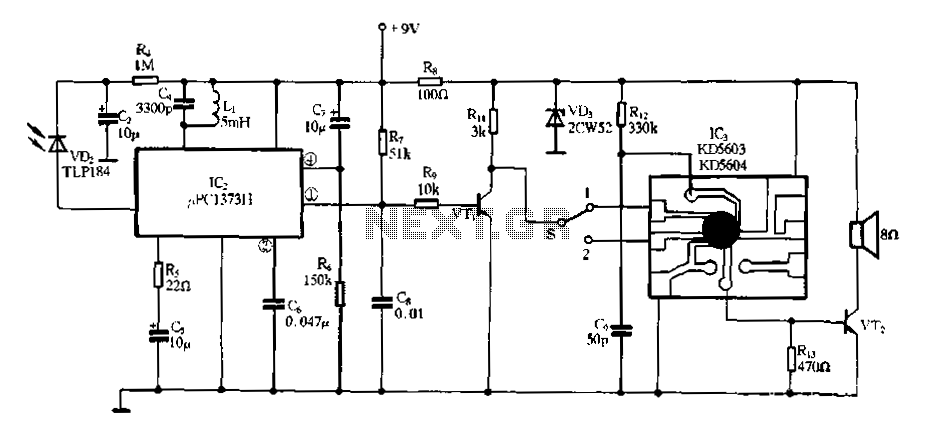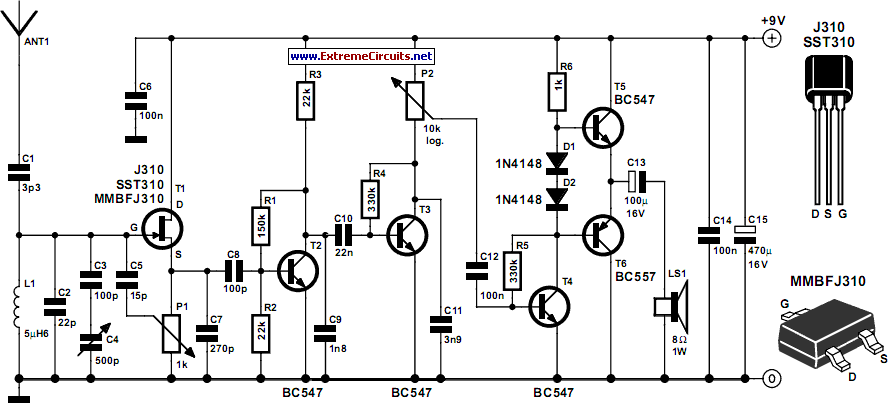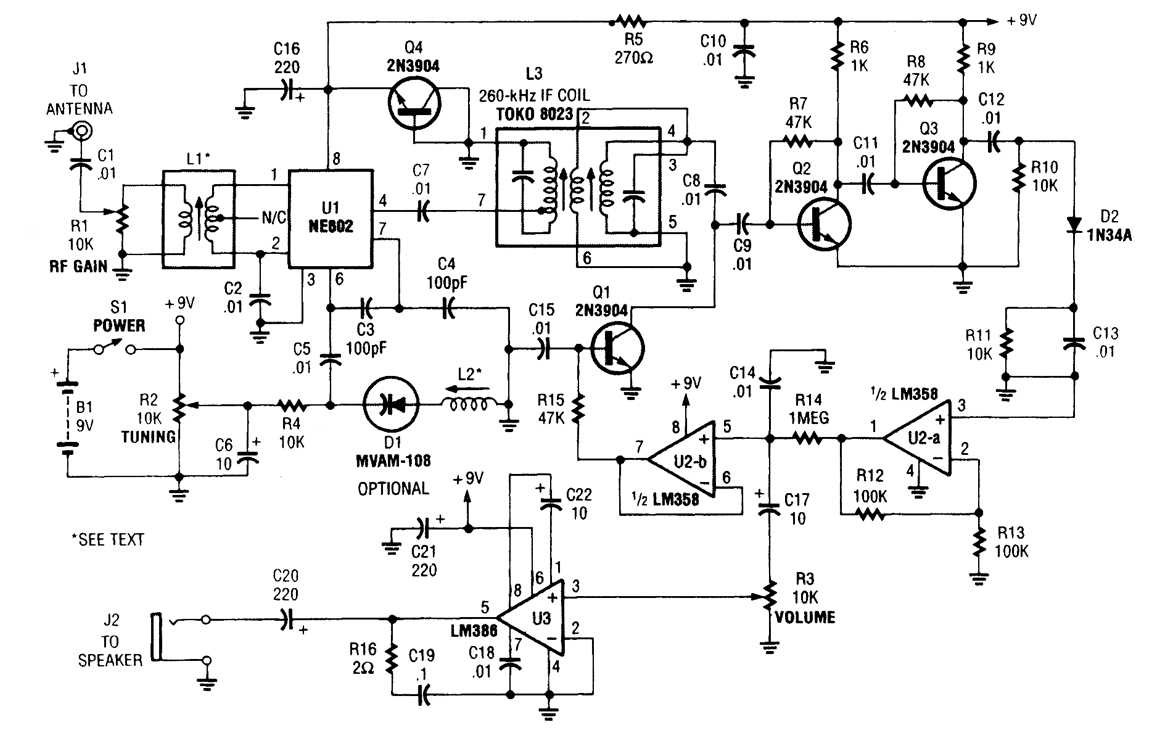
pocket receiver
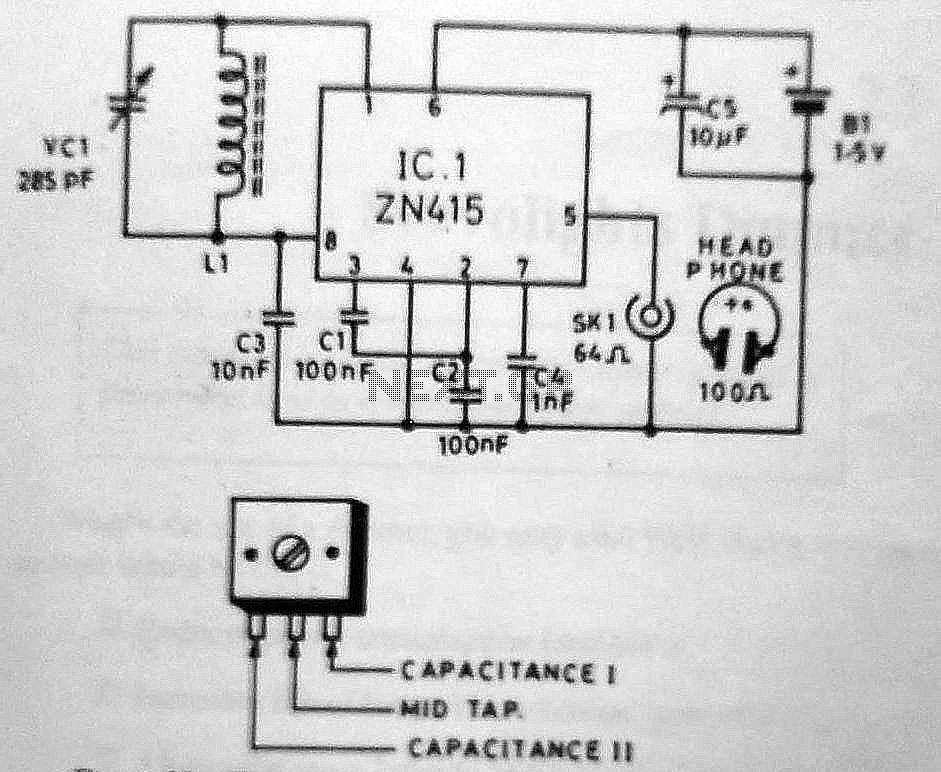
The circuit utilizes an 8-pin DIP ZN415 radio receiver chip manufactured by Ferranti. This circuit offers advantages over the ZN414 model by incorporating an integrated amplifier stage. The integrated circuit (IC) features a complete AM detection subsystem. It employs a tuned circuit consisting of inductor L1 and variable capacitor VC1, which serves as the tuning control. Inductor L1 captures the radio signals and transmits them to IC1, which subsequently drives high-impedance headphones.
The ZN415 radio receiver circuit is designed for simplicity and efficiency in receiving amplitude modulation (AM) signals. The 8-pin DIP configuration allows for easy integration into various electronic applications. The built-in amplifier stage enhances the overall performance by providing sufficient gain to drive high-impedance headphones directly, eliminating the need for an external amplifier.
The tuned circuit, composed of L1 and VC1, is crucial for selecting the desired frequency from the radio spectrum. Inductor L1 is designed to resonate with the variable capacitor VC1, allowing the user to adjust the tuning to specific AM broadcast frequencies. This tuning mechanism ensures that the circuit can effectively filter out unwanted signals, providing a clearer audio output.
The AM detector subsystem within the ZN415 is responsible for demodulating the received radio signals. It converts the amplitude variations of the incoming radio waves into an audio signal that can be heard through the headphones. The design of the circuit ensures that the audio output is of high quality, suitable for casual listening.
Power supply requirements for the ZN415 circuit are minimal, making it suitable for battery-operated devices. The circuit can operate within a range of voltages, typically from 3V to 12V, allowing for flexibility in various applications. Overall, the ZN415 radio receiver circuit is a compact and efficient solution for AM radio reception, ideal for hobbyists and educational projects in electronics.The circuit uses an 8-pin DIP ZN415 radio receiver chip from Ferranti. The circuit has an edge over the ZN414 in having an in-built amplifier stage. The IC contains a complete AM detector subsystem. The circuit uses a tuned circuit based on L1 and VC1 serves as tuning control. L1 detects the signals and passe them on to IC1, which in turn, drives high impedance headphones. That`s all. 🔗 External reference
The ZN415 radio receiver circuit is designed for simplicity and efficiency in receiving amplitude modulation (AM) signals. The 8-pin DIP configuration allows for easy integration into various electronic applications. The built-in amplifier stage enhances the overall performance by providing sufficient gain to drive high-impedance headphones directly, eliminating the need for an external amplifier.
The tuned circuit, composed of L1 and VC1, is crucial for selecting the desired frequency from the radio spectrum. Inductor L1 is designed to resonate with the variable capacitor VC1, allowing the user to adjust the tuning to specific AM broadcast frequencies. This tuning mechanism ensures that the circuit can effectively filter out unwanted signals, providing a clearer audio output.
The AM detector subsystem within the ZN415 is responsible for demodulating the received radio signals. It converts the amplitude variations of the incoming radio waves into an audio signal that can be heard through the headphones. The design of the circuit ensures that the audio output is of high quality, suitable for casual listening.
Power supply requirements for the ZN415 circuit are minimal, making it suitable for battery-operated devices. The circuit can operate within a range of voltages, typically from 3V to 12V, allowing for flexibility in various applications. Overall, the ZN415 radio receiver circuit is a compact and efficient solution for AM radio reception, ideal for hobbyists and educational projects in electronics.The circuit uses an 8-pin DIP ZN415 radio receiver chip from Ferranti. The circuit has an edge over the ZN414 in having an in-built amplifier stage. The IC contains a complete AM detector subsystem. The circuit uses a tuned circuit based on L1 and VC1 serves as tuning control. L1 detects the signals and passe them on to IC1, which in turn, drives high impedance headphones. That`s all. 🔗 External reference
